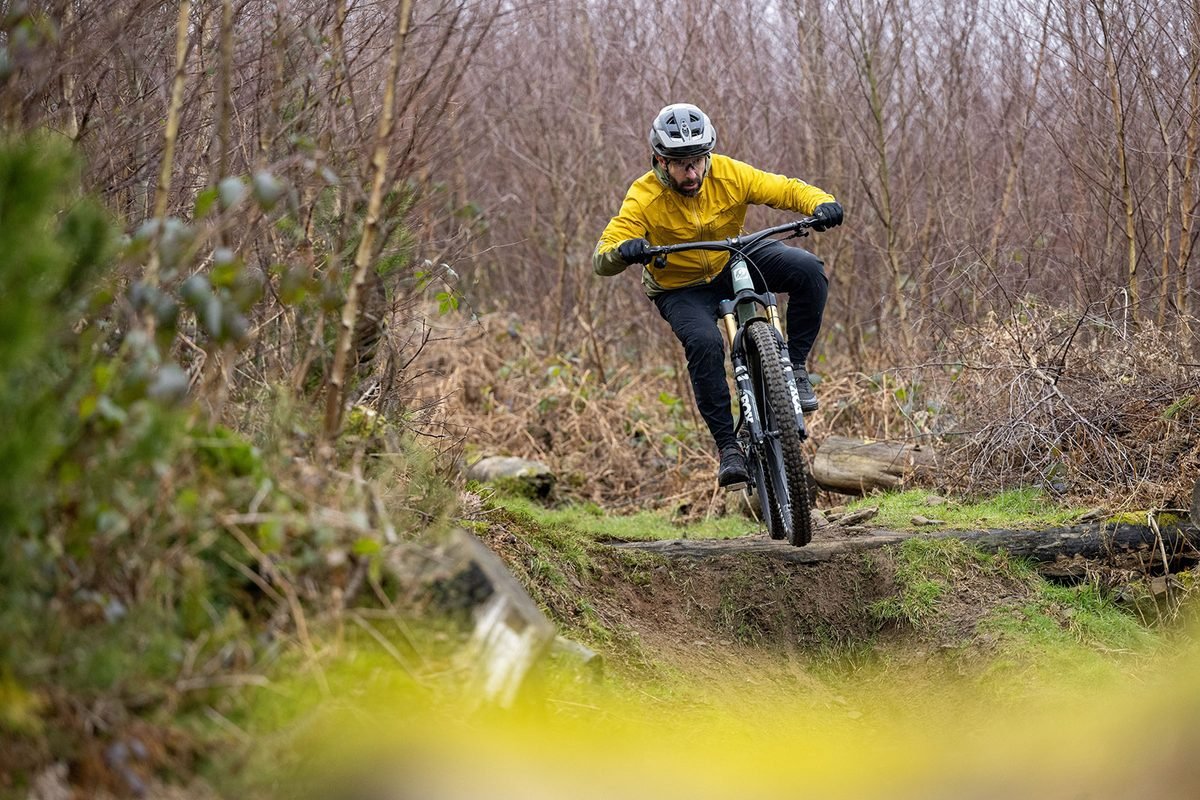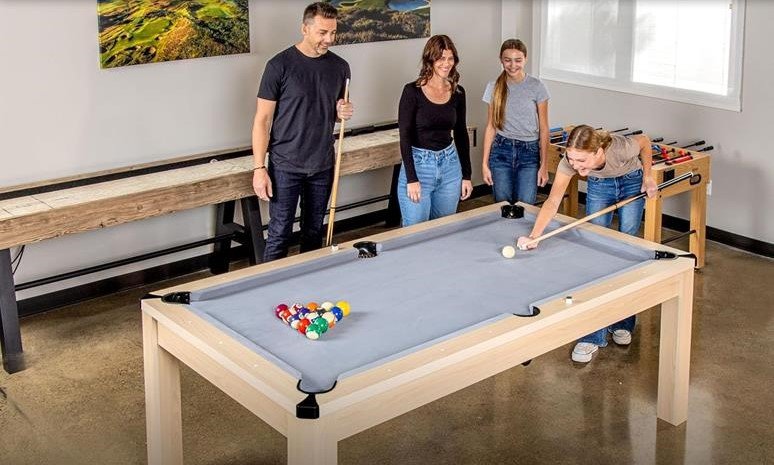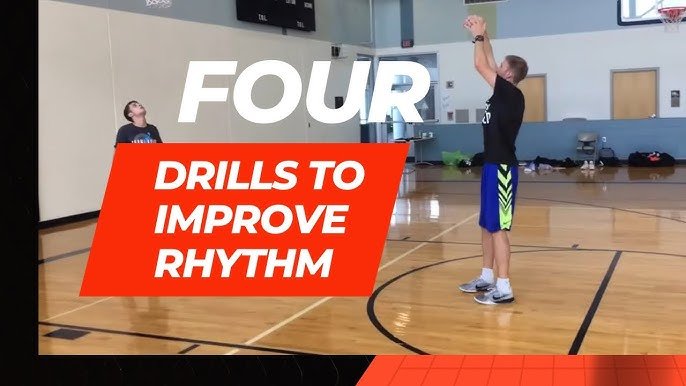Looking to find the perfect mountain bike for your trail adventures? Choosing the right bike can make all the difference between an exciting ride and a frustrating one.
You want a bike that matches your style, handles rough paths with ease, and feels comfortable every time you hit the trail. This guide will help you discover which mountain bike suits your needs best, so you can enjoy every ride to the fullest.
Keep reading to unlock the key to your next great trail experience!

Trail Riding Basics
Trail riding is a fun way to explore nature on a bike. It needs a bike that can handle rough paths and hills.
Choosing the right mountain bike helps you ride safely and enjoy the trails more.
Key Features Of Trail Bikes
Trail bikes have features that make riding on uneven paths easier. They balance speed, control, and comfort.
Good trail bikes have strong brakes, good suspension, and wide tires for grip.
- Suspension: Softens bumps and keeps the bike steady
- Brakes: Usually hydraulic disc brakes for quick stopping
- Tires: Wide with tread for better grip on dirt and rocks
- Gears: Multiple gears to handle steep climbs and fast descents
- Frame Geometry: Designed for stability and control on trails
Types Of Trail Terrain
Trails can be rocky, muddy, smooth, or steep. Each type needs different bike features.
Knowing the trail type helps you pick the best bike for your rides.
- Rocky Trails: Need strong tires and good suspension
- Muddy Trails: Tires with deep tread for grip
- Smooth Dirt Trails: Faster tires with less tread work well
- Steep Trails: Bikes with strong brakes and good gear range
Choosing The Right Frame Material
Bike frames come in materials like aluminum, carbon, and steel. Each has pros and cons.
Frame material affects weight, strength, and ride comfort.
- Aluminum: Lightweight and affordable, good for most riders
- Carbon Fiber: Very light and strong, but costlier
- Steel: Strong and durable, offers a smooth ride but heavier
Suspension Systems
Choosing the right suspension system is key for trail mountain bikes. It affects comfort, control, and speed on different terrains.
There are many suspension types, but hardtail and full suspension are the most common. Each suits different riding styles and trails.
Hardtail Vs Full Suspension
Hardtail bikes have suspension only in the front fork. They are lighter and easier to maintain. Good for smooth trails and climbing.
Full suspension bikes have both front and rear suspension. They offer better comfort and control on rough trails. They weigh more and need more care.
- Hardtail: lighter, cheaper, best for smooth trails
- Full suspension: smoother ride, better for rough trails
- Choose based on trail difficulty and riding style
Travel Length And Its Impact
Travel length means how far the suspension moves to absorb shocks. It changes how the bike handles bumps and drops.
Short travel (80-120mm) is good for fast, smooth trails. Long travel (140-180mm) works better on steep, rough trails.
- Short travel: lighter, faster, less shock absorption
- Long travel: better shock absorption, heavier, slower
- Pick travel length based on trail roughness and speed
Adjustable Suspension Benefits
Adjustable suspension lets riders change settings to fit different trails. It improves comfort and bike control.
You can adjust firmness, rebound speed, and lockout. Lockout stops suspension for better pedaling on smooth ground.
- Adjust firmness for soft or hard suspension feel
- Change rebound to control how fast suspension returns
- Use lockout to pedal efficiently on flat trails
Wheel Size And Tires
Choosing the right wheel size and tires is key for trail mountain biking. These parts affect speed, control, and comfort on rough paths.
Understanding the differences helps you pick the best setup for your riding style and trail conditions.
Comparing 27.5″ And 29″ Wheels
27.5-inch wheels turn faster and handle tight corners well. They suit riders who want quick, nimble control.
29-inch wheels roll over obstacles easier. They keep speed better on long, rough trails and offer more traction.
| Feature | 27.5″ Wheels | 29″ Wheels |
| Turning | Quicker, sharper | Smoother, wider arcs |
| Speed | Good acceleration | Better top speed |
| Obstacle Clearance | Lower | Higher |
| Weight | Lighter | Heavier |
Tire Width And Tread Patterns
Tire width affects grip and rolling resistance. Wider tires offer more traction but roll slower. Narrow tires are faster but grip less.
- Width:Choose 2.1″ to 2.5″ for most trail riding.
- Tread Pattern:Knobby tires work best on loose dirt and mud.
- Low-profile treadsperform well on hard-packed trails.
- Mixed treadsbalance grip and speed.
Tubeless Vs Tubed Tires
Tubeless tires let you run lower air pressure. This improves traction and reduces flat risks from punctures.
Tubed tires are easier to install and repair. They weigh slightly less but can pinch flat more often.
- Tubeless Tires: Better grip, fewer flats, need sealant.
- Tubed Tires: Simpler setup, easier fixes, higher flat risk.

Drivetrain And Gearing
The drivetrain and gearing of a mountain bike affect how well you ride on trails. They help you climb hills and control speed on descents. Picking the right setup makes your trail rides easier and more fun.
Trail riding needs gears that fit different terrains. You want smooth shifting and good power. Understanding the types of chainrings and gear ratios helps you choose the best bike for trails.
Single Vs Multiple Chainrings
Single chainring bikes have one front gear. They are simple and light. They reduce the chance of the chain falling off. Many riders like them for easy trail riding.
Multiple chainring bikes have two or three front gears. They offer more gear options for climbing and speed. This can help on very steep or mixed trails. They add some weight and complexity.
- Single chainring: simple, light, less maintenance
- Multiple chainrings: more gears, better for varied terrain
- Choose based on trail difficulty and personal preference
Gear Ratios For Trail Riding
Gear ratio is the size difference between the front and rear gears. Low gear ratios help you climb steep hills with less effort. High gear ratios let you go faster on flat or downhill parts.
Trail riders usually want a wide range of gears. This range helps tackle climbs and fast sections. Having the right gear ratio means you can ride longer and with less strain.
| Gear Type | Use on Trails | Example Ratio |
|---|---|---|
| Low Gear | Climbing steep hills | 1:1 or lower |
| Medium Gear | Rolling terrain | 1.5:1 to 2.5:1 |
| High Gear | Fast descents and flats | 3:1 or higher |
Shifting Performance Tips
Good shifting keeps your ride smooth and safe. Shift before you reach steep hills or obstacles. Avoid shifting under heavy pedaling pressure to protect your gears.
Regularly clean and lubricate your drivetrain. This helps gears shift better and last longer. Check for worn parts and replace them to keep performance high.
- Shift early, not on steep climbs
- Pedal lightly when shifting
- Keep drivetrain clean and lubricated
- Inspect gears for wear often
Braking Systems
Braking systems are key for mountain biking on trails. They help you control speed and stop safely on rough paths.
Choosing the right brakes can improve your riding experience and safety.
Hydraulic Vs Mechanical Disc Brakes
Hydraulic disc brakes use fluid to transfer force from the lever to the brake pads. This gives stronger and smoother braking power.
Mechanical disc brakes work with cables. They are simpler and easier to fix but need more hand strength to use well.
- Hydraulic brakes offer better modulation and power.
- Mechanical brakes cost less and are easier to maintain.
- Hydraulic brakes need special tools for repair.
- Mechanical brakes can be adjusted without much skill.
Rotor Size Considerations
Rotor size affects braking strength and heat control. Larger rotors give more stopping power and cool down faster.
| Rotor Size | Best For | Benefits |
| 140 mm | Light trails, cross-country | Lighter weight, enough power for easy rides |
| 160 mm | All-around trail riding | Good balance of power and weight |
| 180 mm or more | Steep, technical descents | Stronger braking and heat resistance |
Maintenance Tips
Keep brakes working well by cleaning and checking them often. Proper care extends their life and keeps you safe.
- Inspect brake pads for wear; replace if thin.
- Clean rotors with isopropyl alcohol to remove dirt.
- Check hydraulic fluid levels and bleed brakes if needed.
- Tighten bolts and check cables on mechanical brakes.
- Test brakes before every ride to ensure good performance.
Fit And Comfort
Choosing the right mountain bike for trails means focusing on fit and comfort. A bike that fits well helps you ride longer without pain.
Comfort keeps you safe and makes trail riding more fun. Let’s look at key parts that affect comfort.
Frame Size Selection
Picking the right frame size is the first step for a good fit. A frame too big or small can cause discomfort or control problems.
Use your height and leg length to find the correct frame size. Many brands offer size charts to help with this.
- Stand over the bike to check clearance
- Check reach to the handlebars for comfort
- Look for a size that allows easy control
Handlebar And Saddle Choices
Handlebars affect how you steer and your riding posture. Choose handlebars that fit your riding style and body shape.
The saddle should support you without causing pressure points. A good saddle reduces soreness on long rides.
- Wide handlebars offer more control on rough trails
- Narrow handlebars fit better in tight spaces
- Saddles come in different shapes for men and women
- Adjust saddle height and tilt for best comfort
Pedal Options
Pedals affect how you push the bike and your foot stability. Choose pedals that match your skill and trail type.
Some riders prefer flat pedals for easy foot release. Others like clipless pedals for better power transfer.
- Flat pedals work well for beginners and technical trails
- Clipless pedals lock your feet for strong pedaling
- Choose pedals with good grip to avoid slipping
- Consider pedal size for foot comfort and control
Top Trail Bikes In 2025
Trail biking is a popular outdoor activity. Choosing the right bike helps you enjoy the ride. This guide covers the best trail bikes in 2025.
We look at bikes for different budgets and needs. Whether you want an affordable bike or a top model, you will find options here.
Budget-friendly Picks
Budget-friendly trail bikes offer good quality for less money. They are great for beginners and casual riders. These bikes often have simple designs and reliable parts.
- Co-op Cycles DRT 1.1 – solid frame and good suspension
- Giant Talon 1 – lightweight and easy to handle
- Specialized Rockhopper – durable and versatile
Mid-range Models
Mid-range trail bikes balance cost and performance. These bikes have better components and smoother rides. They suit regular riders who want more features.
| Model | Frame Material | Suspension | Price Range |
|---|---|---|---|
| Cannondale Trail 5 | Aluminum | Front suspension | $1,000 – $1,200 |
| Trek Marlin 7 | Aluminum | Front suspension | $900 – $1,100 |
| Santa Cruz Chameleon | Aluminum | Full suspension | $1,500 – $1,800 |
High-end Performance Bikes
High-end trail bikes deliver top performance and advanced features. They use lightweight materials and high-quality suspension. These bikes suit serious riders and racers.
- Specialized Stumpjumper – carbon frame and full suspension
- Santa Cruz Hightower – designed for tough trails
- Yeti SB130 – excellent suspension and control
Maintenance And Upgrades
Choosing the best mountain bike for trails is only part of the journey. Keeping your bike in good shape helps you ride safer and longer.
Regular maintenance and smart upgrades make your bike perform better and last more years.
Essential Maintenance Tips
Cleaning your bike after every ride stops dirt from causing damage. Check your tires for wear and proper air pressure before each trip.
Lubricate the chain often to keep it smooth and quiet. Inspect brakes and gears to make sure they work well and adjust as needed.
- Wash the frame and parts gently
- Check tire pressure regularly
- Lubricate the chain and moving parts
- Test brakes and gears before riding
- Tighten loose bolts and screws
Upgrading Components
Upgrading parts can improve how your bike feels and handles on trails. Start with tires suited for the terrain you ride most.
Better brakes give you more control and safety. You can also upgrade the suspension for a smoother ride on rough paths.
- Choose tires with good grip for your trails
- Upgrade to hydraulic brakes for stronger stopping power
- Improve suspension for better shock absorption
- Consider a lighter wheelset for easier climbing
- Swap saddles for more comfort on long rides
When To Replace Parts
Parts wear out over time and need replacing to keep your bike safe. Replace tires if the tread is worn or if there are cuts.
Change brake pads when stopping power drops. Replace the chain if it stretches or skips gears. Look for cracks or bends in the frame and wheels.
- Replace tires with worn or damaged tread
- Change brake pads when braking feels weak
- Swap the chain if it skips or stretches
- Inspect frame and wheels for cracks or dents
- Replace cables if shifting or braking feels rough

Frequently Asked Questions
What Type Of Mountain Bike Suits Trail Riding Best?
Trail bikes with 120-150mm suspension travel are ideal. They balance climbing efficiency and descending control. Their geometry offers comfort and stability on varied terrain. These bikes handle technical features and rough trails well.
How Important Is Suspension For Trail Mountain Bikes?
Suspension enhances comfort and control on uneven trails. Front suspension (hardtail) is lighter and efficient for smoother paths. Full suspension offers better shock absorption for technical, rough terrain. Choose based on trail difficulty and riding style.
Should I Choose A Hardtail Or Full Suspension Bike?
Hardtails are lighter, cheaper, and great for smooth trails. Full suspension bikes provide more comfort and control on rough, technical trails. For versatile trail riding, full suspension is often the best choice.
What Wheel Size Is Best For Trail Mountain Bikes?
29-inch wheels offer better roll-over capability and stability on trails. They maintain speed well on rough terrain. 27. 5-inch wheels are more agile and better for tight, technical trails. Choose based on trail type and rider preference.
Conclusion
Choosing the right mountain bike is crucial for trail adventures. Consider your riding style and trail type. Different bikes offer unique benefits. Some excel on rocky paths, others on smooth trails. Pay attention to suspension, frame, and tires. Test ride before buying.
Comfort and control matter most. Research and reviews help make informed decisions. Invest time in finding the perfect match. A well-chosen bike enhances your trail experience. Enjoy the thrill of mountain biking. Happy trails!


